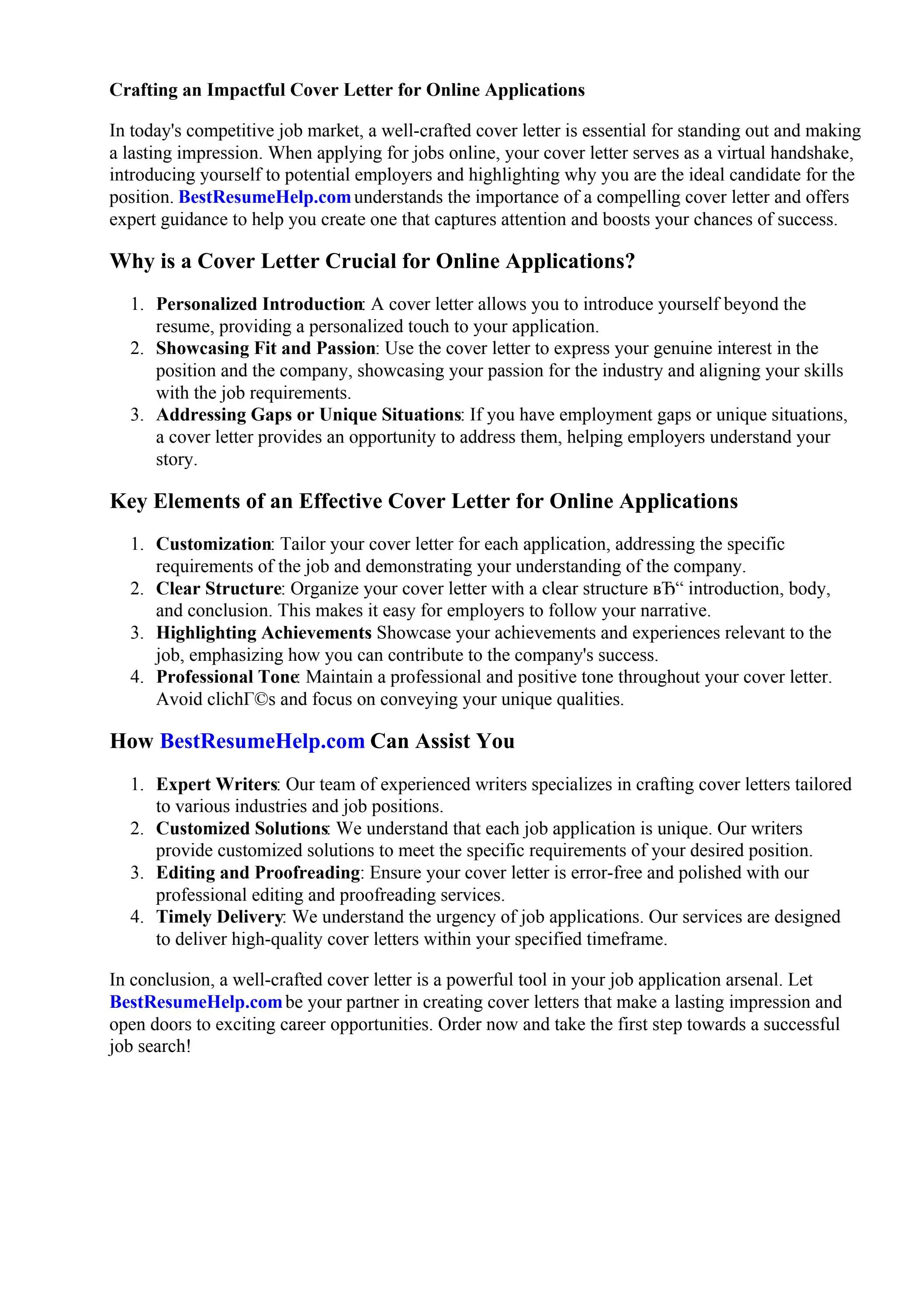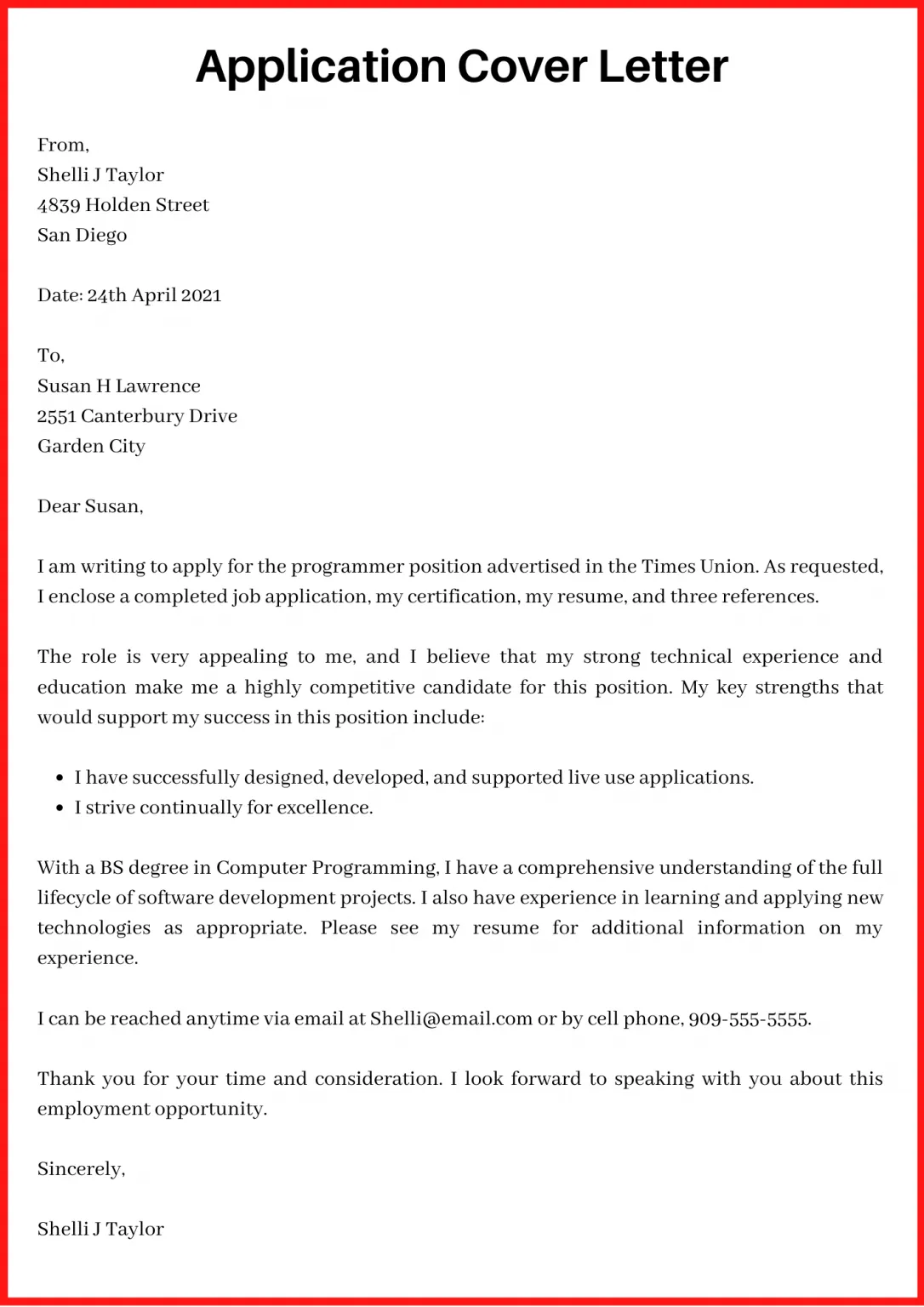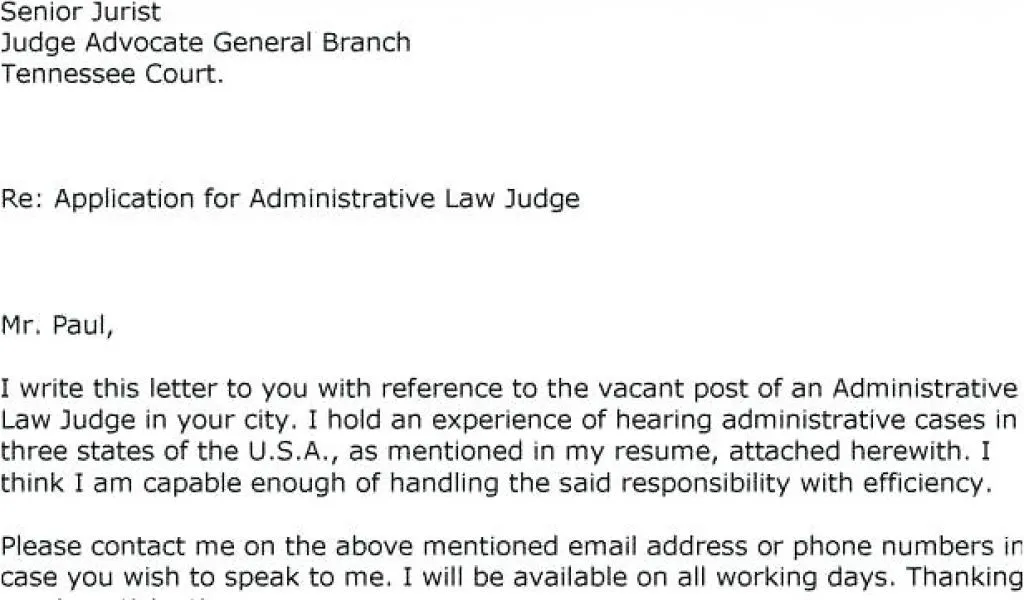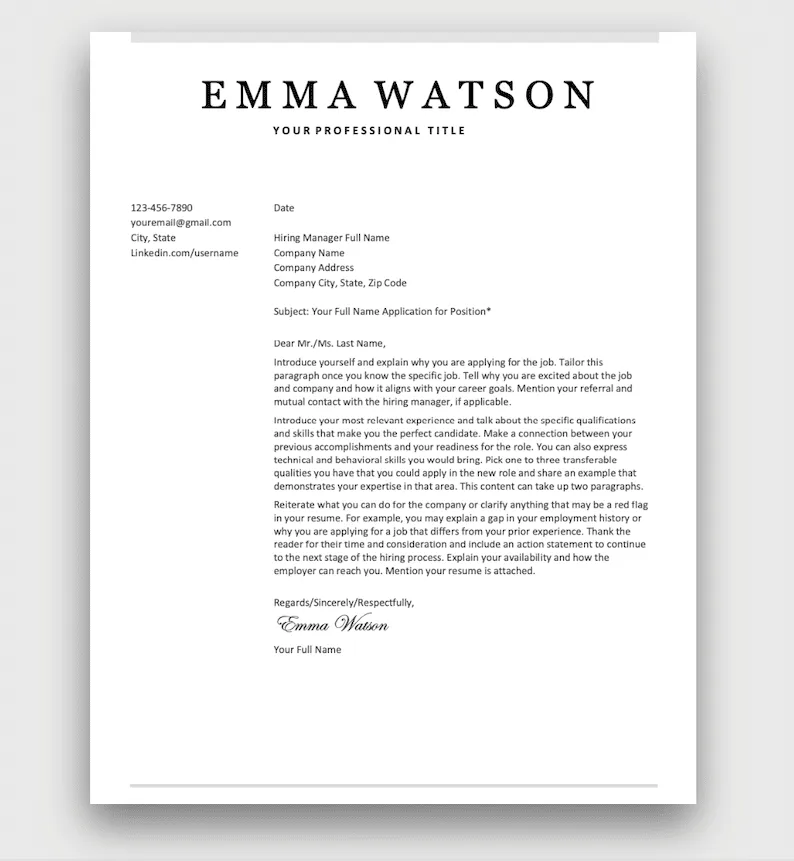Understanding the Online Application Process
The online application process has become the standard for job hunting in today’s digital age. Understanding this process is the first step toward crafting a winning cover letter. It typically begins with identifying a job posting online, either on a company’s career page, job boards such as LinkedIn, Indeed, or Glassdoor, or through recruitment agencies. Once you find a suitable position, you will be directed to an online portal where you must submit your application. This usually includes uploading your resume and cover letter, along with any other required documents, such as transcripts or portfolios. The entire process is streamlined, with automated systems often used to screen applications before they even reach a human recruiter. Being aware of this process allows you to optimize your application for success.
The Importance of a Cover Letter
In the realm of online applications, where countless candidates vie for the same position, a cover letter serves as your personalized introduction. It’s more than just a formality; it’s your chance to shine, demonstrating your personality, passion, and suitability for the role beyond the confines of your resume. While a resume provides a factual overview of your skills and experience, a cover letter allows you to connect with the hiring manager on a more personal level. It provides the opportunity to articulate your enthusiasm for the specific opportunity and showcase how your unique experiences align with the company’s needs. In a competitive job market, a well-crafted cover letter can significantly increase your chances of standing out from the crowd and securing an interview.
Highlighting Your Skills and Experience

Your cover letter should serve as a highlight reel for your relevant skills and experience. Start by carefully reviewing the job description and identifying the key requirements and qualifications the employer is seeking. Then, use your cover letter to showcase how your skills and experience directly align with these requirements. Provide specific examples of your accomplishments, using the STAR method (Situation, Task, Action, Result) to demonstrate the impact of your contributions in previous roles. Quantify your achievements whenever possible to provide concrete evidence of your capabilities. For instance, instead of saying, “Managed social media accounts,” say, “Increased social media engagement by 30% within six months by implementing a new content strategy.” This approach helps the hiring manager quickly assess your suitability for the position.
Tailoring Your Cover Letter
Generic cover letters rarely make a positive impression. Tailoring your cover letter to each specific job application is crucial. Avoid using a template without making substantial revisions. Instead, customize your letter to align with the specific requirements and values of the company and the role. Research the company, understand their mission, and reflect this knowledge in your letter. Demonstrate how your skills and experience uniquely position you to contribute to their goals. Highlight the aspects of the job that excite you most and explain why you believe you’re the perfect fit. Tailoring your cover letter demonstrates that you’ve invested the time and effort to understand the opportunity, showing your genuine interest in the role and the company.
Researching the Company
Before you start writing, invest time in researching the company. Visit their website, explore their social media profiles, and read news articles about them. Understand their mission, values, and recent achievements. This research allows you to tailor your cover letter to the company’s specific needs and demonstrate your genuine interest. Identify the company’s current challenges and how your skills can help them overcome those challenges. Referencing specific projects, products, or initiatives will show you’ve gone the extra mile. Additionally, knowing the company’s culture will help you adjust your tone and style to fit their brand. Researching the company is a vital step in writing a compelling cover letter that captures the hiring manager’s attention.
Formatting Your Cover Letter

Proper formatting is essential for a professional and easy-to-read cover letter. Use a clean, readable font like Arial, Calibri, or Times New Roman in a standard size (11 or 12 points). Keep your letter concise, ideally one page in length. Use clear headings and bullet points to break up large blocks of text and make it easier for the reader to scan. Ensure your contact information, including your name, phone number, email address, and LinkedIn profile URL, is clearly displayed at the top. Use professional language and avoid slang or jargon. A well-formatted cover letter demonstrates attention to detail and respect for the reader’s time, significantly enhancing your chances of a positive first impression.
Proofreading and Editing
Proofreading and editing are non-negotiable steps in the cover letter writing process. Even the most compelling content can be undermined by grammatical errors, typos, and awkward phrasing. Before submitting your cover letter, carefully proofread it multiple times. Check for spelling mistakes, punctuation errors, and grammatical inconsistencies. Read your letter aloud to catch any awkward sentences or phrasing. Consider having a friend, family member, or career counselor review your cover letter for a fresh perspective. A polished cover letter shows that you are detail-oriented and committed to producing high-quality work. A single error can inadvertently convey a lack of professionalism, so take your time to ensure your cover letter is error-free.
Key Action Verbs to Use
The language you use in your cover letter can significantly impact its effectiveness. Using strong action verbs helps convey your accomplishments and make your letter more engaging. Instead of stating, “Responsible for project management,” use “Managed projects, delivering them on time and within budget.” Other effective action verbs include led, developed, implemented, created, achieved, increased, improved, and collaborated. Using a variety of action verbs demonstrates your range of skills and abilities. Refer to the job description for inspiration, and incorporate the verbs used by the employer. This helps demonstrate that you not only possess the required skills but also communicate them effectively.
Showcasing Your Personality and Enthusiasm

While professionalism is essential, your cover letter should also reflect your personality and enthusiasm. Let your passion for the role and the company shine through. Share what excites you about the opportunity and how your skills can help the company achieve its goals. Use a conversational tone, but maintain a professional demeanor. Add a touch of your personality to demonstrate that you’re not just a list of qualifications but a real person with genuine interest. Showing genuine enthusiasm will help you stand out from other candidates and leave a memorable impression on the hiring manager. After all, employers are looking for someone they want to work with.
Common Mistakes to Avoid
Several common mistakes can undermine your cover letter. Avoid generic cover letters that are not tailored to the specific job. Do not simply repeat your resume; instead, elaborate on your accomplishments. Avoid typos, grammatical errors, and overly long paragraphs. Don’t be negative or critical of previous employers or colleagues. Refrain from using jargon or overly complex language that might confuse the reader. Never exaggerate your skills or experience. Ensure you address the letter to the correct person, if possible. Avoid clichés and focus on providing specific examples and demonstrating your value. By avoiding these common pitfalls, you will significantly increase your chances of making a positive impression.
Following Up After Submission
After submitting your online application, it’s appropriate to follow up with the hiring manager or recruiter. However, be mindful of the company’s preferred communication methods. If the job posting specifies a no-contact policy, respect it. If not, a brief, polite email a week or two after the application deadline is acceptable. In your follow-up, reiterate your interest in the position and briefly mention why you believe you’re a good fit. Thank the hiring manager for their time and consideration. Avoid being overly persistent or contacting the company multiple times. Following up professionally shows your continued interest and initiative, but respecting the company’s guidelines is crucial.
In conclusion, writing a winning cover letter for an online application requires careful planning, research, and attention to detail. By understanding the application process, highlighting your skills, tailoring your letter, and avoiding common mistakes, you can significantly increase your chances of securing an interview. Remember to proofread your letter meticulously and express your personality and enthusiasm. Good luck!
